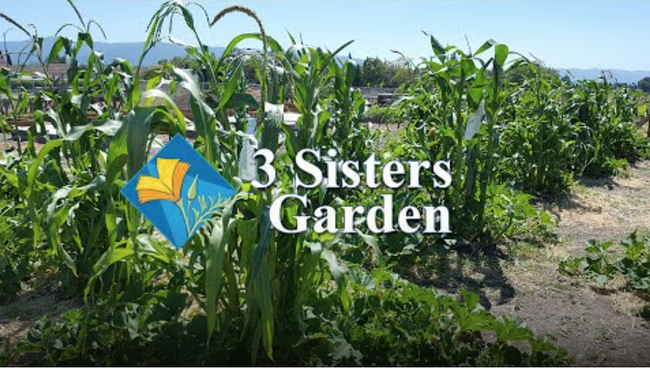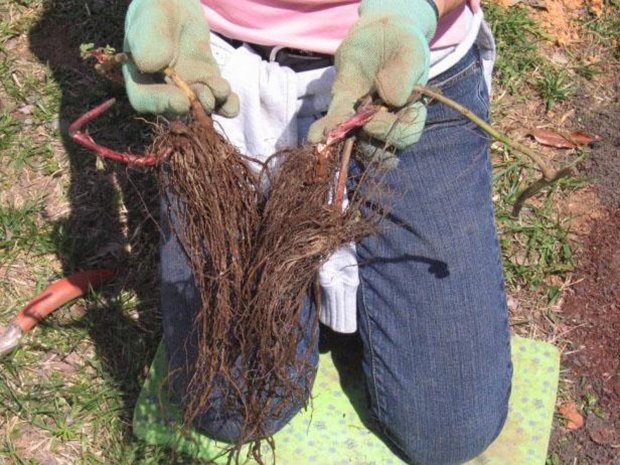We are proud to introduce a new video, 3 Sisters Garden, now available on our YouTube channel. Over a year and a half in the making, the video was made possible through the hard work of the 3 Sisters Garden crew and the inspired production of our video team. Enjoy watching squash, beans, and corn, growing together in perfect harmony!
And what to do this month in your garden
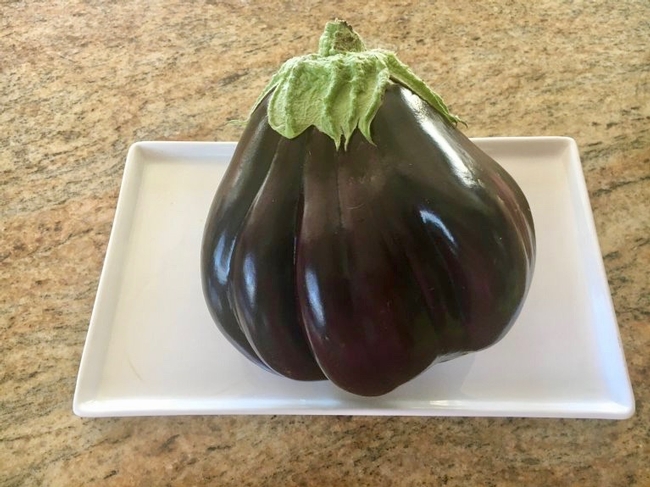
Eggplants come in all shapes, sizes, and colors. Japanese and Chinese varieties are usually long and narrow and can be lavender to deep, dark purple. Indian (sometimes call baby eggplant because they are so small) are reddish purple and are great in curry, stuffed, or roasted. Some Thai eggplant are actually green when ripe. “Fairy Tale” are very small, can fit in the palm of your hand, and are a beautiful purple with white stripes. They are very tender and great for grilling. “Little Green” has pale-green skin and is mild and very creamy when cooked.
Now is a great time to plant your eggplant (from transplant). They are easy to grow, even in containers. They grow best in a warm, sunny location with at least 6 or more hours of direct sunlight. They should be spaced about 24-36 inches apart.
They are upright growers but will need support once they start fruiting to hold all the weight of the abundant fruit. When planting, mix in a good organic compost and some slow-release fertilizer. With proper care and feeding, many varieties will keep producing well into the winter months – I have often served them with my Thanksgiving dinner.
This month in your garden
- Check irrigation and mulch: If you haven't already inspected your irrigation system or put down that very important layer of mulch, it's not too late. Do it before the summer heat sets in.
- Deadhead roses, salvias, and dahlias to encourage continual blooming. Remove spent buds from camellias, rhododendrons, and azaleas.
- Control earwigs which feed on soft plants and can cause significant damage. Trap them by setting out moistened, tightly rolled newspaper at night and then discard it in the morning.
- Fire blight shows up in the spring. It causes blackened branches and twigs that look like they have been scorched. It often affects fruit trees such as apple, pear, loquat, and quince; as well as toyons, hawthorns and crabapples. It is spread by insects, rain, and pruning. If left unattended it can kill the tree. Prune the infected branch about 8-12 inches below the visible damage.
- Prune suckers from rose bushes. It can be difficult to tell the difference between suckers and basal canes. They both shoot straight up with vigorous growth. Suckers grow from below the bud union. Basal canes originate at the bud union and should be left on – they are the best wood on the plant.
- Don't forget to deep water your trees (especially if they are less than three years old). We are likely moving back into drought conditions; deep watering once a month will help protect those environmentally-important fruit and ornamental trees. It takes much less water to preserve established trees than it does to start new ones!
Plant this month
- By seed: arugula, beans, beets, Brussels sprouts, corn, cucumber, melons, summer and winter squash.
- By transplant: arugula, basil, beans, beets, corn, cucumber, eggplant, melons, mint, peppers, summer and winter squash, and tomatoes. Local nurseries should have a good supply of most of these.
Give back
Too much fruit? If you have an abundance of fruit and have already “over-shared” with your neighbors, contact Village Harvest. They offer volunteers that will pick your fruit and then donate it to a worthy food bank.
by UC Master Gardener Rebecca Jepsen
This article first appeared in the June 10, 2018 print issue of the San Jose Mercury News.
Top five methods to preserve your harvest
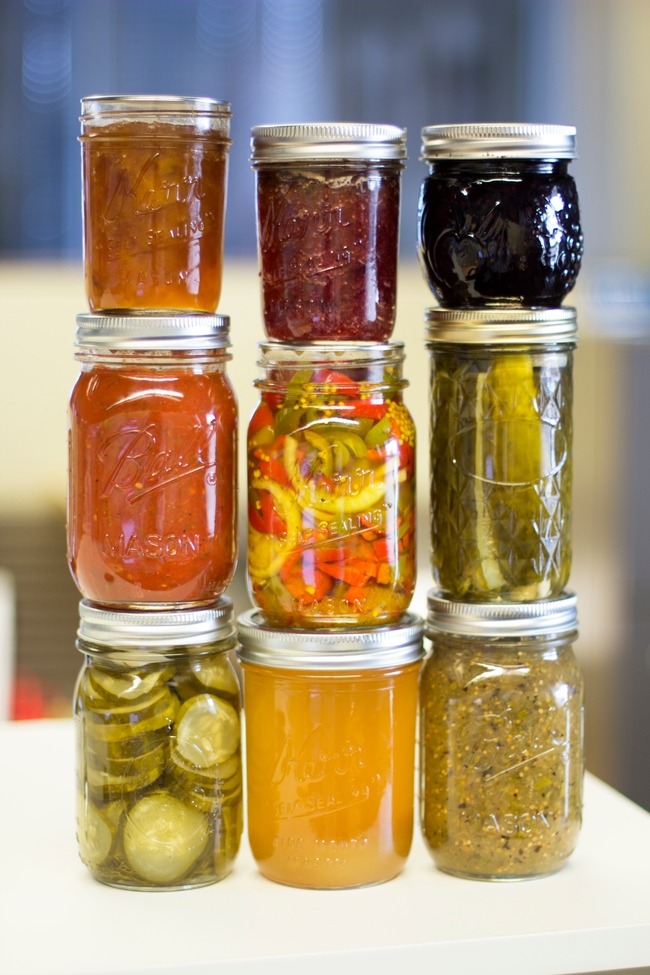
You can make the most of your garden harvest by keeping everything fresh and harvesting fruits and vegetables as soon as they are ready. Leaving them on the vine or stem for too long and they can attract pests and diseases. Flavor and texture also tend to deteriorate over time.
Cooking
Fruits can be simmered and pureed and then either canned or frozen. It can also be dried into fruit leather. Vegetables can be cooked, pureed, and then frozen for later use in soups, casseroles, and other recipes. All those zucchini can be cooked into Chocolate Zucchini Cake for a popular dessert that always disappears quickly. They can also be stuffed and frozen for a simple pop-in-the-oven dinner.
Freezing
Freshly picked and washed produce can be placed in a resealable plastic bag or container and stored in the freezer. If you have an abundance of tomatoes that you will be canning, this is an excellent way to retain that fresh flavor while waiting for enough ripe fruit to warrant firing up the stove. Peas and beans should be hulled before freezing, but those pods can be tossed into a separate freezer bag to be used to make soup stock come winter.
Canning
Canning tomatoes is an easy way to store food from your garden. The acidity in tomatoes makes them far less likely to develop mold. That being said, enlist the help of an experienced canner and be sure to follow food safety guidelines whenever canning.
Drying
Many fruits and vegetables from your garden can be dried for future use and easy storage. Grapes, peas, and beans can be dried at room temperature. For other foods, you can use a commercial dehydrator or your oven. Times and temperatures vary, depending on the type of food and its thickness. You can look online or go to your local library for specific instructions.
Gifting
Sometimes, your garden will simply produce more food than you can use. Family, friends, and neighbors should always top the list when your garden produces abundance. Local food banks and other charities are nearly always happy to accept donations of fresh fruits and vegetables.
Rather than tossing out the fruits of your labor, make the most of your harvest with these simple methods for prolonging your garden's shelf life.
by UC Master Gardener Kate Russell
Photo: UC, Melissa Womack
This article first appeared in the August 17, 2017 issue of South Valley Magazine.
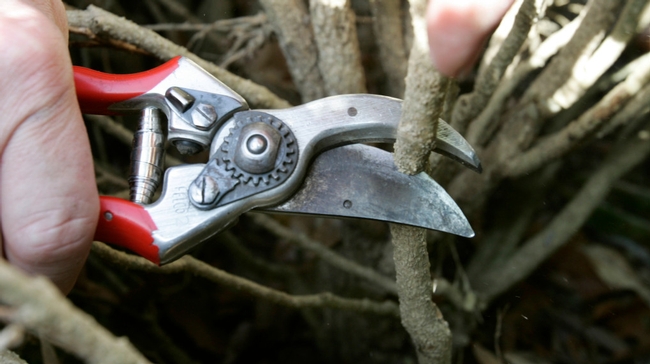
If you want to stay ahead of the game in the garden, now is a good time to do some, or all, of the things on today's list.
Fruit-tree pruning
Fruit-tree pruning is best done this month and in February. Trim off dead or damaged branches. Open up the tree's canopy by removing crossing branches. After pruning, apply a dormant oil spray to ward off scale, mealy bugs, whiteflies, and mites. Pruning should be completed by the end of February before buds begin to open. Aso see the UC Publication on Fruit Trees: Training and Pruning Deciduous Trees.
Don't prune frost damage yet. Tender plants may have suffered from our December frosts, but pruning them early can do additional harm. Wait until the chance of frost has passed, probably mid-March, before removing unsightly leaves and branches.
Fireproofing
Fireproofing the area within 30 feet of your home can mean the difference between saving or losing it in a blaze. Never plant pines, junipers, eucalyptus or greasewood trees within this zone, since they are high in oils and resins, and so extremely flammable. Keep brush and small branches trimmed back from structures. Small plants, no taller than 18 inches, and fire-resistant groundcovers are recommended. See UC's publication on Home Landscaping for Fire for more information.
Lawn care
Moss and algae in the lawn is usually caused by neglect. Specifically, it may mean poor drainage, too much water, soil compaction, restriction of airflow, too much thatch or a soil imbalance. Reduce watering, dethatch, aerate to reduce compaction and/or perform a soil test. The pH level should have an acidity range between 6-7. An application of fertilizer will with help eliminate the moss, while algae needs a reduction of fertility.
Protect plants
Frost-protect sensitive plants by keeping soil moist and covering plants with a blanket or cloth during the night when there are warnings of a possible freeze. If possible, move outdoor potted plants under eaves, preferably on the east or south side of the house.
Move houseplants to a bright, sunny location. Clean foliage by washing sturdy leaves with a moist cloth or rinsing the entire plant under a tepid shower. Dust leaves of succulents with a soft brush.
- Find a complete list of January Gardening Tips.
By bare root: artichokes, asparagus, blackberries, grape vines, onions, raspberries, rhubarb, strawberries, roses, fruit trees, perennials.
By seed: arugula, Asian greens, bell beans, broccoli, cauliflower, lettuce, peas, salsify, spinach.
- Find a list of cool-season vegetables that do well in Santa Clara County.
by UC Master Gardener Rebecca Jepsen
Pruning photo: Kenneth Silver/Newport News Daily Press
Bare root plants photo: Courtesy DIY Network
This article first appeared in the January 7 print issue of the San Jose Mercury News.
Plus: Two native plant tours will show you what's possible in your own yard.
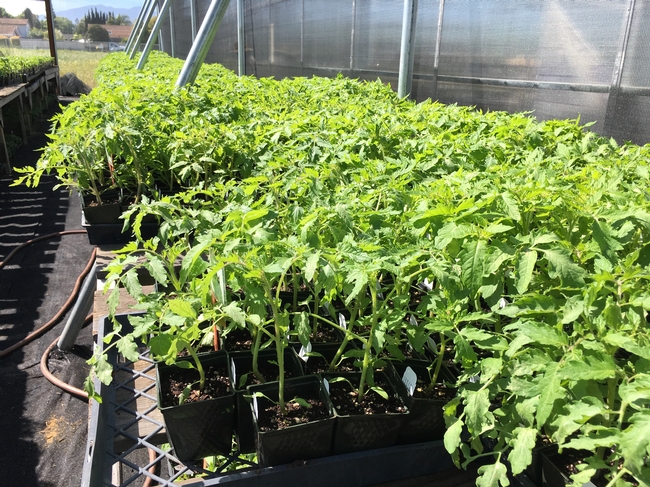
Area Master Gardeners have spent the last several months seeding, transplanting and nurturing tens of thousand of vegetables, herbs and flowers. Each variety and been trialed and selected based on its ability to do well in our various microclimates.
They also have tasted hundreds of tomatoes and peppers to ensure that each is worthy of a place in your garden. Not only will there be options you can't find anywhere else in the Bay Area, there will also be experts on hand and demonstrations on growing great tomatoes, pest management, sustainable gardening and more.
You will find tomatoes in almost every color of the rainbow –purple, green, orange, yellow, white, black, and of course, red. Pepper offerings include bells so sweet you can eat them like candy and super hot ones that might make you put your doctor on speed-dial. There will be traditional purple eggplant, but how about trying a white or rose-colored one as well?
If you aren't adding edible flowers to your salads, you are missing out. The sales will have a variety that will also encourage bees in your garden.
South Bay
Santa Clara Master Gardeners‘ Garden Market is the oldest and largest in the Bay Area. There will be more than 20,000 plants, including 75 varieties of tomatoes and nearly 100 peppers; dozens of sunflowers, herbs and eggplants.
Ask about the Romanian Gogosari or the Cullarici, two unique peppers you won't find commercially available anywhere else in the country.
If you love succulents, you will be delighted with the array of choices — individual plants, sampler packs and beautiful arrangements, artfully potted in clever containers.
- 9 a.m. to 2p.m., April 8. History Park at Kelley Park, 1650 Senter Road, San Jose
San Mateo/San Francisco
Along with an array of tomatoes, eggplants and peppers, the San Mateo and San Francisco Master Gardeners will be offering strawberries, herbs, microgreens and pumpkins. They will help you select varieties that do well in cooler climates as well as the small spaces of city-gardening.
Look for Patio Baby, a miniature eggplant that is perfect for containers, and other varieties developed for smaller gardens.
- 9 a.m. to 1 p.m. April 1, San Mateo County Event Center, Sequoia Hall, 2495 Delaware St., San Mateo
East Bay
The Contra Costa Master Gardeners really want to get the East Bay gardening. This year they are hosting three markets on different days and locations to make it easy for folks to attend.
Beyond the most sought-after options, they will be offering unique selections such as the Pomodoro Canestrino di Lucca, a robust and flavorful roma tomato that produces prolific, deep orange fruit.
They are also will have tomatillos as well as peppers, eggplant and herbs.
- 10 a.m. to 3 p.m. April 1, Our Garden, 2405 Shadelands Drive, Walnut Creek.
- 10 a.m. to 3 p.m. April 8, Richmond Civic Center Public Library, 325 Civic Center Plaza, Richmond
- 10 a.m. to 3 p.m. April 22, Contra Costa County Fairgrounds, 1201 W. 10th St., Antioch
Native plants tours
If vegetable gardens aren't your only interest, check out the Going Native Garden Tour in the South Bay, and the Bringing Back the Natives tour in the East Bay.
Now in its 15th year, the Going Native Garden Tour showcases waterwise, low-maintenance plants that are attractive, require little care and encourage and support our native birds, bees and beneficial insects.
The tour includes a variety of designs and plant selections at homes in the South Bay and on the Peninsula. For more information and to register on the website.
- 10 a.m. to 4 p.m., April 22 and April 23
Registration is now open for the Bringing Back the Natives annual plant tour that offers visits to 45, mostly native gardens throughout the East Bay. The tour is designed to let gardeners see how they can incorporate native, low-water plants in there own gardens.
The tour is free although there is a $10 fee for a program. Register early.
- 10 a.m. to 5 p.m. May 7
by UC Master Gardener Rebecca Jepsen
This article first appeared in the March 23 issue of the San Jose Mercury News.


